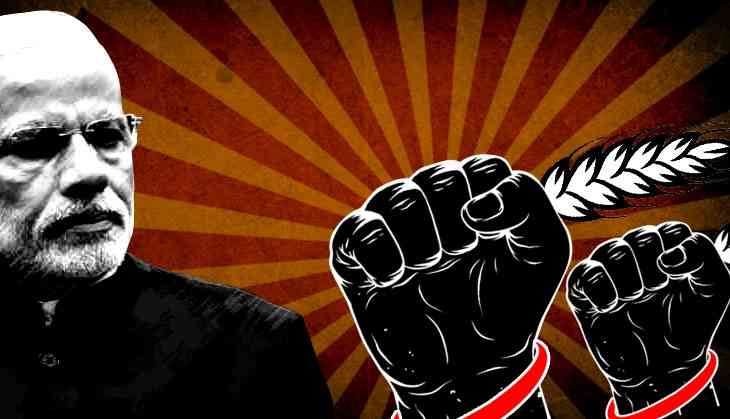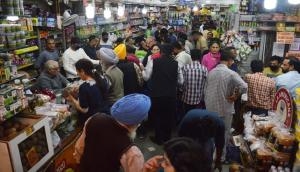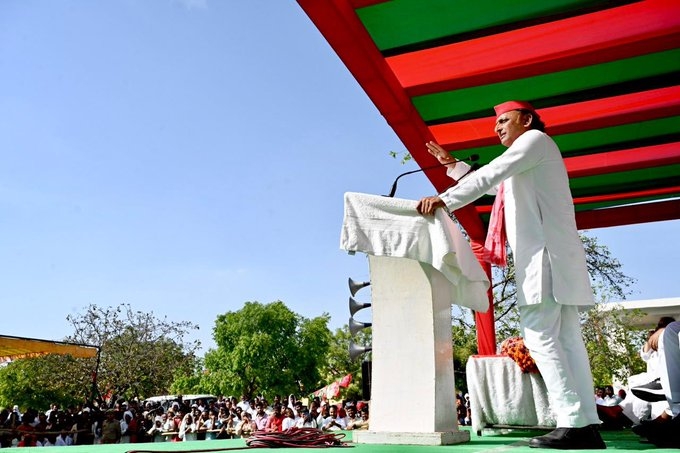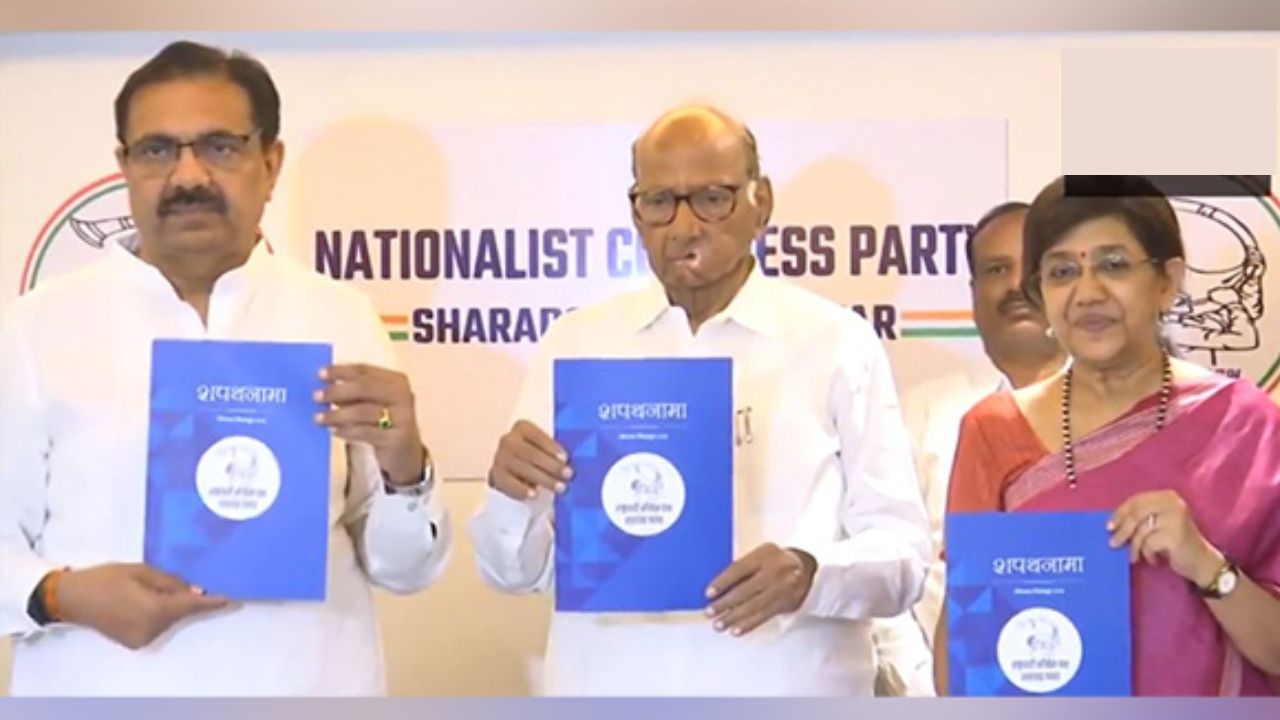Dear Modi govt, don't test the patience of India's farmers

India’s farmers are finding themselves in dire straits and the reasons for this are the policies of Central and state governments, especially regarding pricing, and the shrinking of land holdings.
The condition of farmers is becoming worse with each passing day – this can be gauged by the fact that on an average 2035 farmers have been losing ‘main cultivator’ status every single day for the past 20 years now. This means that there are 2,035 less farmers in India every single day.
Numbers tell a story
- The 70th Round data of the National Sample Survey Organisation (NSSO) revealed that the average monthly income of an agricultural household is just Rs 6426 per month at the national level. Within this average monthly income, income from cultivation is reported to be only 47.9% i.e Rs 3078 per month (the remaining comes from livestock: 11.9%; from wage/salary: 32.2% and from non-farm business: 8%).
- If this amount is divided into two adults per family, the daily wage comes to Rs 107 which is way below the minimum wage fixed in any state of India. This is in stark contrast to the Seventh Pay Commission recommendations in which minimum pay of a government employee – a sweeper - has been increased to Rs. 18,000 from the existing salary of Rs. 7,000.
- In the past 47 years, the Minimum Support Price (MSP) of wheat was increased by 21 times, whereas the basic salary plus DA of a government employee was raised by an average of 120 to 150 times.
Pricing problems
At the root of the crisis lies the Union government’s MSP policy. On one hand, the increase in MSP for various crops is woefully inadequate. On the other hand, the Centre and state governments fix targets on how much can be procured by the government. The target is often so low that most farmers don’t get a chance to sell at the MSP. This leaves the farmers with no option to sell the produce in the market, where the prices are deliberately kept low by cartels of wholesale traders.
On its part, the government doesn’t intervene even when farmers are forced to sell at prices well below the MSP. Here are some examples of the problems farmers are facing across the country because of the MSP policy.
- The profit margins of farmers have been steadily declining on account of rising input costs. In 2015, Punjab State Agricultural Department factored the increase in input costs and recommended that the MSP of wheat should be Rs 1950 per quintal.
- The Chief Minister of Punjab requested the Commission for Agriculture Costs & Prices (CACP)and the Centre but to no avail. The MSP of wheat for the Rabi season of 2015 was fixed at Rs 1525. This year too, the state agriculture department has forwarded a detailed proposal to the CACP seeking hike in the MSP of wheat from Rs 1,625 per quintal in 2016-17 to Rs 2,180 in 2017-18. Past experiences show that this demand will also fall on deaf ears.
- Now let’s take the recent example of Moong this October. The CACP has calculated the cost of production of Moong to be Rs 5700/quintal and the government has announced the MSP of Moong for this year to be Rs 5575/quintal. This means that if the farmer is lucky and manages to sell at the MSP of Rs 5575/quintal, then also, he will lose Rs 125/quintal.
- According to the Agmarket website, On 16 October, farmers in Hanumangarh sold their Moong produce at an average price of Rs 4160 per quintal. Thus, the farmer is being forced to sell his Moong crop at a loss of Rs 1415/quintal with respect to the announced MSP. Who will pay the difference i.e. Rs 1415/quintal to these farmers?
- The case of Urad is similar. The MSP for Urad is Rs 5400/quintal. According to the Agmarket website, on 16 October, farmers in Ujjain district of Madhya Pradesh sold Urad at Rs 2466/quintal. This means that the farmer is losing Rs 2934/quintal vis-à-vis the announced MSP.
- Farmers in Gujarat are also at the receiving end. On 17 October, farmers in Porbander had to sell their groundnut crop at Rs 2710/quintal against the minimum support price of Rs 4450/quintal. Hence, the farmers were selling at a loss of Rs 1740/quintal.
- Madhya Pradesh, the epicentre of the farmer uprising earlier this year, fares no better. Farmers were forced to sell their soyabean crop at Rs 1805/quintal vis-à-vis the announced Minimum Support Price of Rs 3050/quintal. The moot question is how will farmers bear these losses?
- In 2016, Congress leader Mallikarjun Kharge said in the Lok Sabha that the government imported Tur Daal at Rs 10,114 per quintal, while the MSP was Rs 5,050/quintal. Now, on one side, domestic farmers were not getting MSP of Rs 5050/quintal and were forced to sell at 3500-4200/quintal and on the other side, the government was more than happy to pay Rs 10,114 per quintal for imported Tur Daal. This shows the government’s apathy towards farmers.
- Analysts are still trying to make sense of last year’s massive import of 6.6 million tonnes of pulses, that too when we had a bumper production of 23 million tonnes. Our domestic consumption is 22-24 million tons per annum.
- The general complain of the farmers is that the MSP is less than the cost of production and the travesty is that the farmer are not even being given the MSP. It is worth mentioning that a former chairman of CACP had told a parliamentary committee on agriculture that “the methods of data collection while determining the MSP of crops are questionable”.
- Another pertinent point is that the data provided to CACP, while determining the MSP of the current season’s crops is two to three years old. There is no compensation to the farmer with respect to the increase in input costs for this lag of two to three years. Except farming, there is no other business in India, where the proprietor sells his wares at prices which are below his manufacturing costs.
Farmers have no say
The farmer, who is the primary stake holder of agriculture, has no say in the value chain. Input prices are decided by companies and output prices are decided by the government. As John F Kennedy had once remarked: “Farmer is the only man in our economy who buys everything at retail, sells everything at wholesale, and pays for freight both ways.”
The point to be noted is that input costs of farmers are way more than the prices he is able to realise in the market. The question that now arises is what option does the farmer have besides taking credit from money-lenders and banks to meet his expenses?
Though the Swaminathan Report covers only 6% farmers of India, it was a ray of hope for farmers. During the 2014 Lok Sabha election campaign, Narendra Modi had promised that he would implement it. But these hopes were dashed in February 2015, when the government told the Supreme Court that it would not be able to increase the MSP for agricultural produce to be 50% more than the input cost, a key recommendation of the committee.
Additional Solicitor General Maninder Singh submitted the Centre's affidavit which stated that, "prescribing an increase of at least 50% on cost may distort the market”. The argument that 14 crore farmers will be underpaid by the government to ensure that the market is not distorted, defies logic. Is there a single bureaucrat, who will be willing to work for 30 days but get paid only for 15 days work?
The agenda of the government is very clear: they want to underpay the farmer to control inflation. This claim is further cemented by a recent CRISIL report, which says that the denial of a rightful income is the main reason behind the agrarian crisis sweeping through the country.
“While the average annual growth in Minimum Support Price (MSP) was 19.3 per cent between 2009 and 2013, it was only 3.6 per cent between 2014 and 2017,” the report states. This clearly shows a difference between UPA and NDA when it comes to increasing MSP. The UPA appears to have preferred raising MSP, even at the risk of causing a rise in prices.
It is sad that government takes cognisance of the flawed policy aspects only when there is a national uproar. This disconnect between policy making and the ground realities can only be addressed if farmers consolidate their votes and become stakeholders in policy-making and more importantly, in implementation of policy.
First published: 31 October 2017, 17:19 IST





![BJP's Kapil Mishra recreates Shankar Mahadevan’s ‘Breathless’ song to highlight Delhi pollution [WATCH] BJP's Kapil Mishra recreates Shankar Mahadevan’s ‘Breathless’ song to highlight Delhi pollution [WATCH]](http://images.catchnews.com/upload/2022/11/03/kapil-mishra_240884_300x172.png)

![Anupam Kher shares pictures of his toned body on 67th birthday [MUST SEE] Anupam Kher shares pictures of his toned body on 67th birthday [MUST SEE]](http://images.catchnews.com/upload/2022/03/07/Anupam_kher_231145_300x172.jpg)






